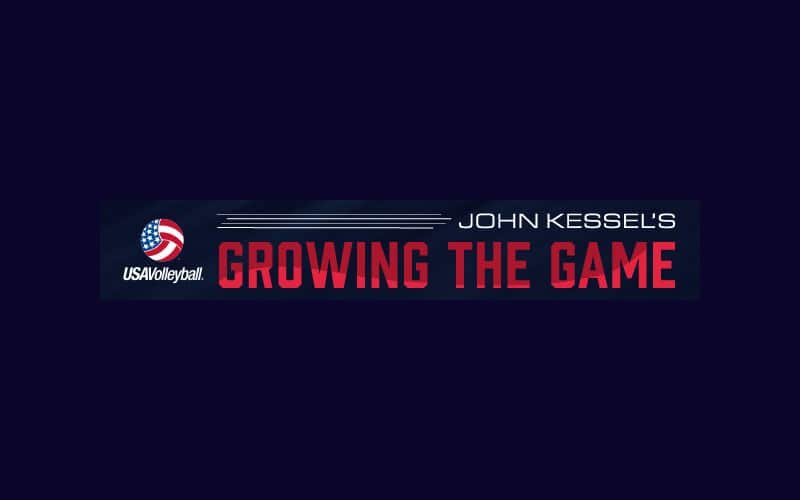
At a coaches clinic in Denmark, we spoke of the idea of freeing all the balls from their cages rather than let them be trapped all summer long in their locked storage bin. The idea is to give them out to next year’s players to learn with when the sun is up for so many hours after work is done. This is part of creating a culture of play that is missing in so many programs.
It’s been a summer full of “aha!” moments as I visited these coaching clinics around the world:
- Teaching a CAP III course with Doug Beal in the Great Plains Region at the Women’s Volleyball Nations League
- Coaching coaches at a CAP I in Mississippi (the Delta Region – their “aha!” moments are seen in the pictures herein)
- A half-day clinic with 30 USA Men and Women’s National Team members helping 200 Anaheim-area school kids and their coaches learn new things about the game
- Nederland for two weeks of the World ParaVolley Championships
- Canada for the men’s VNL and 225 top Canadian High Performance coaches
- And, the biggest one, 225 European Volleyball Confederation (CEV) coaches in person in Denmark from 17 nations, streamed live to another 1,000 viewers from 36 nations. It was special to work again with Fred Sturm (two-time USA men’s Olympic coach) and Beal.
I thought it might be fun to share aha moments from some of the coaches, from the many who shared their beliefs and opinions.
It is hard to break out of your comfort zone
Coaches, like their players, want to look good in practice. Like a duck on the water, many coaches are calm on the surface while paddling like heck to keep their program and their own selves moving forward. The time to learn new things is hard to find, and so the most important read of my summer is about being efficient learners: www.schoolingtheworld.org/a-thousand-rivers
The book “Made to Stick” by Chip and Dan Heath is an important read for all coaches and leaders wanting to effect change.
Most coaches have not had time to consider the “why” nor let their players ask them the “whys.”
The more both are done, the faster the learning when you are not directly working with the player. Indeed, if you have 12 players and 120 minutes of training, you can only average 10 minutes of attention to a player. If they only learn effectively when you are working directly with them, they “waste” the other 110 minutes. When they are guided to self-organize, through purposeful practice and questions, they learn much more in the other 110 minutes, not only when you are there giving them extrinsic feedback.
Swim Noodles make great, low-cost, fast-install extra antennas.
Creating a Culture of Play is Crucial
Living Net (aka “loser becomes the net”), Salt & Pepper, 2v0, 1v1+1 warm-up variations give you the over-the-net touches you need for the most important skill in our sport–reading the opponent and teammates.
Focus on “good” a lot, even in mistakes vs bad error training and perfection.
With our own national teams being out of system about 50 percent of the time, when we are coaching at levels far lower in reading and skill, we need to get good at the chaos and solutions, not the unrealistic perfection in technique.
Players must be able to show they know the technique you want, but we as coaches must be able to know the difference between knowing the skill and being in the wrong place/time. Ours is a very fast-moving, minuscule-rebound-contact-time sport. Often times, the exact technique is not possible or even appropriate.
I urge you to simply google “Brene Brown Perfectionism,” look at the images section, and perhaps put one or two of the quotes that resonate with your coaching up in your gym.
Put their name last
I used to see a teachable moment in the gym, call the players in and say “Lily, when we blah, should we blah or blah?” Now I teach more effectively by calling them all in and saying “When we blah, should we blah or blah…Lily?” This way, everyone is on the hot seat for a moment or two, not just Lily. Remember those moments in grade school when you searched for the answer or hoped the teacher didn’t call on you?
Teach with your back against the wall
This is so they can focus on the feedback. I teach in a multi-court gym, and when I stand out on the court with the other courts behind me, they can’t help but focus on the flying balls and action of the other players.
A “Wall as a Station” can be improved to teach the positive error we want to start all players doing during their volleyball careers rather than the negative errors we currently teach.
Google Translate camera feature can help you survive at any restaurant in any nation.
Not enough coaches take advantage of BAM Video Delay for more impactful coaching in practice. It brings what cost millions down to an under-$10 app. Project the four screens in a row, delaying each by a couple of seconds, and you have a new assistant coach with accurate feedback.
All the coaches want more resources (and drills but for that…consider limiting drills, and increasing your “grills” aka Gamelike Drills), so some of the key things I put into this blog: My Top Things I Must Have as a Coach.
I thank all the coaches for sharing their wisdom and insights with me this summer.
